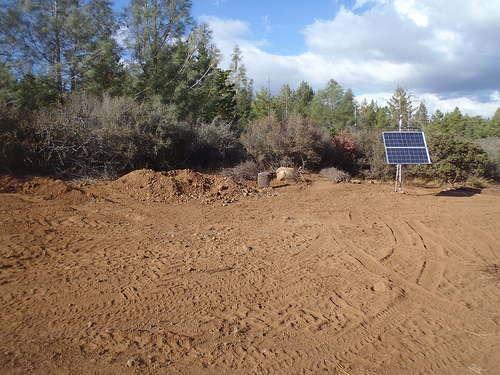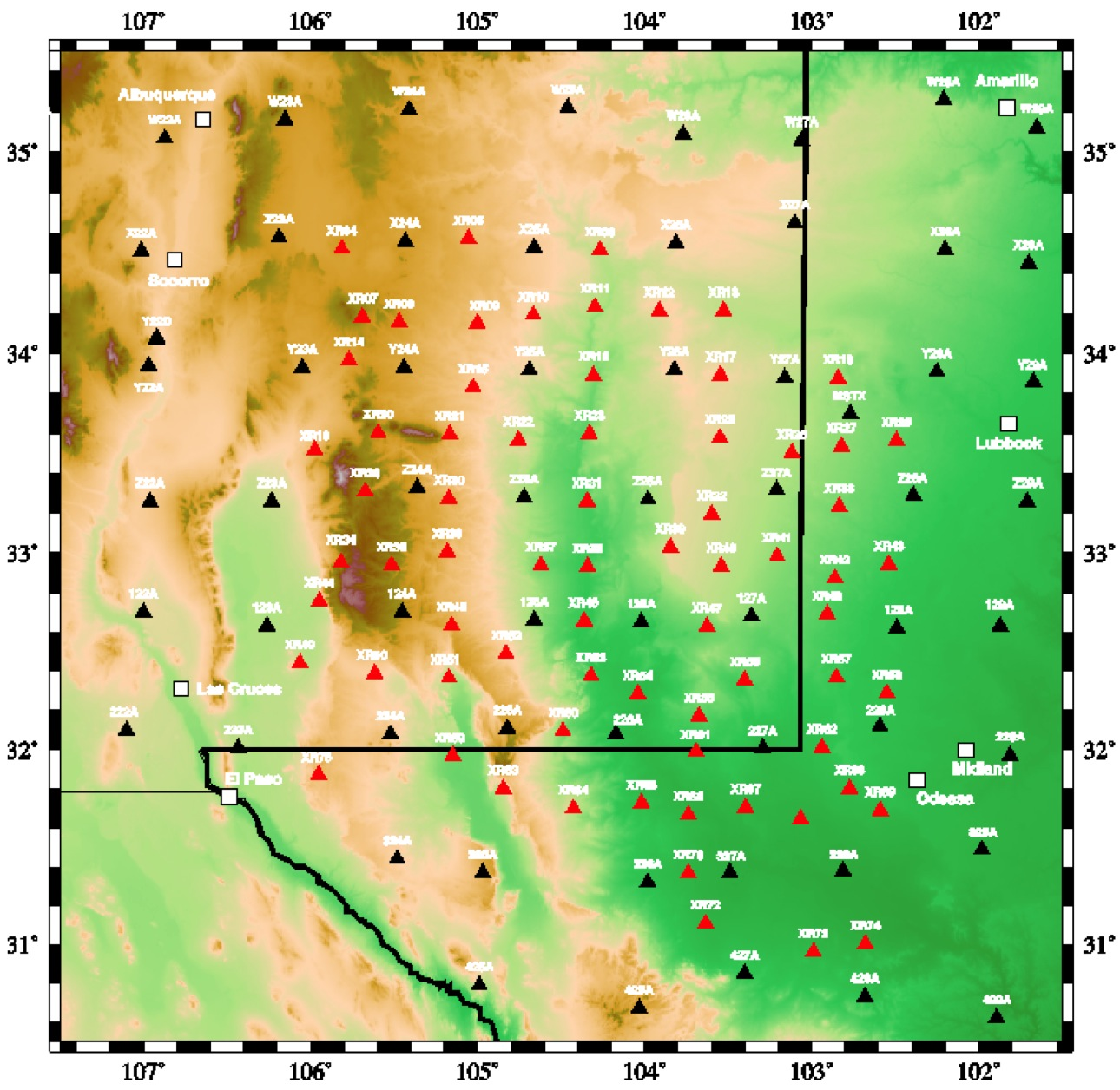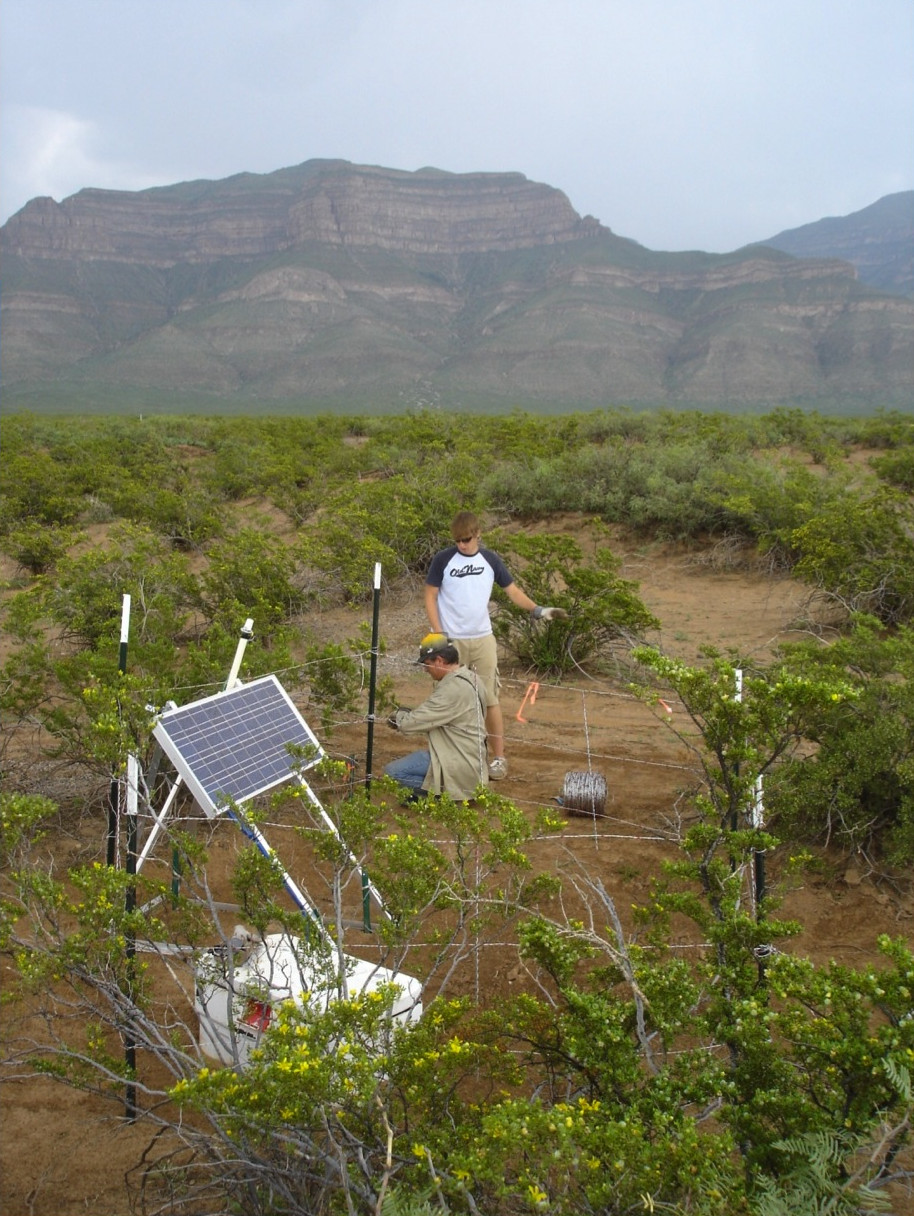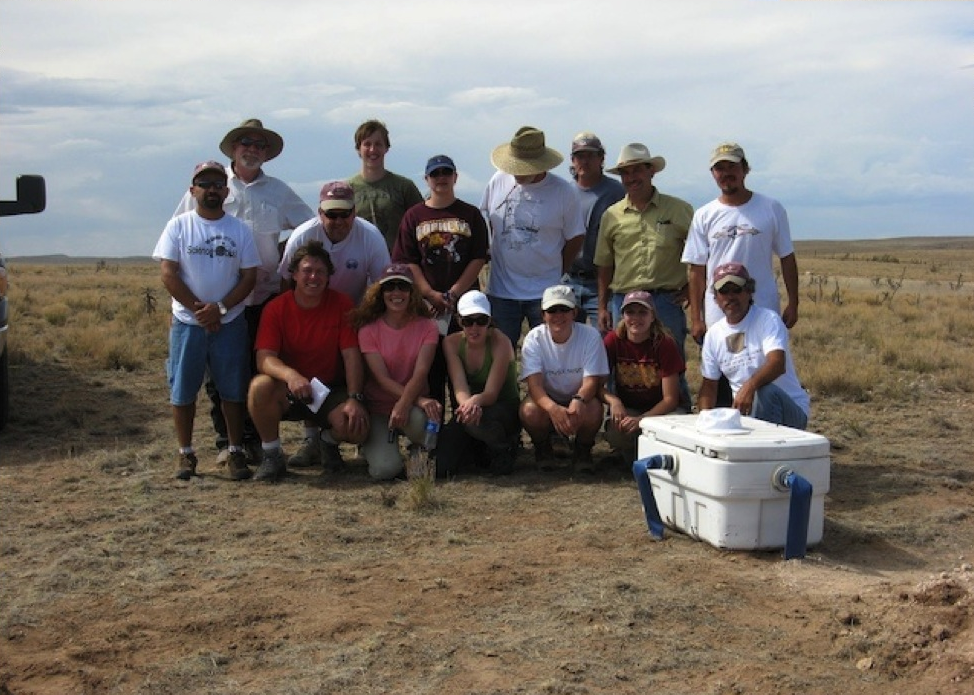O03E
Paynes Creek, CA, USA
The USArray component of the NSF-funded EarthScope project ended its observational period in September 2021 and all remaining close-out tasks concluded in March 2022. Hundreds of seismic stations were transferred to other operators and continue to collect scientific observations. This USArray.org website is now in an archival state and will no longer be updated. To learn more about this project and the science it continues to enable, please view publications here: http://usarray.org/researchers/pubs and citations of the Transportable Array network DOI 10.7914/SN/TA.
To further advance geophysics support for the geophysics community, UNAVCO and IRIS are merging. The merged organization will be called EarthScope Consortium. As our science becomes more convergent, there is benefit to examining how we can support research and education as a single organization to conduct and advance cutting-edge geophysics. See our Joining Forces website for more information. The site earthscope.org will soon host the new EarthScope Consortium website.




 |
| SIEDCAR Deployment |
Principal Investigators and Institutions:
Jay Pulliam, Baylor University
Steve Grand, University of Texas, Austin
Funding Source:
NSF EarthScope
Field Dates:
8/2008 – 12/2010
Equipment Used:
77 Broadband Sensors
Data Status:
Fully Archived
Network Code:
XR
Description:
 |
| SIEDCAR Station |
SIEDCAR intends to learn whether small-scale, "edge driven" convection in the mantle is a significant, "real world" phenomenon and, if so, to explore its effects on surface geology. Specifically, the investigators wish to determine whether a mantle downwelling is occurring along the eastern edge of the Rio GrandeRiftand what effect it has on the tectonics of the Southern Rockies. The evolution of distinct tectonic provinces in southwestern United States since the Cretaceous, including the Great Plains, the Colorado Plateau, and the Rio Grande Rift, has been linked to flat subduction of the Farallon plate beginning about 80 Ma and then its subsequent foundering beginning about 40 Ma. However, there has been a resurgence in tectonic activity (magmatism, extension, and possibly uplift) during the last 10 Ma in the Southern Rockies. The foundering of the Farallon slab occurred about 40 Ma, so there is not a clear connection between that event and present tectonic activity in the region. Small-scale, edge driven convection is a possible explanation for this renewed activity. Results from a previous study, called "La Ristra", indicate a downwelling under the eastern flank of the rift. However, this anomaly is located near the southeastern edge of the La Ristra line, so resolution less than optimal. Furthermore, edge driven convection, if it is occurring, should extend to the north and south along the margin of the craton, but the one-dimensional La Ristra could not produce a three-dimensional image to delineate the downwelling's boundaries or to quantify its characteristics. SIEDCAR's investigators are installing a two-dimensional array of 75 broadband seismographs along the western edge of the Great Plains to supplement and increase the density of USArray's Transportable Array stations, which will traverse the region in 2008-2009. The goal of the deployment will be to obtain quantitative estimates of the size, geometry, location, and density contrast of the feature observed by La Ristra and to model its effects on surface deformation.
Publications:
Pulliam, J., S.P. Grand, Y. Xia, C. Rockett, and T. Barrington. "Edge-Driven Convection beneath the Rio Grande Rift," InSights, v.Summer,2010, p. 2.
 |
| SIEDCAR Crew |
 |
| SIEDCAR Crew at Work |
 |
| SIEDCAR Hardware |